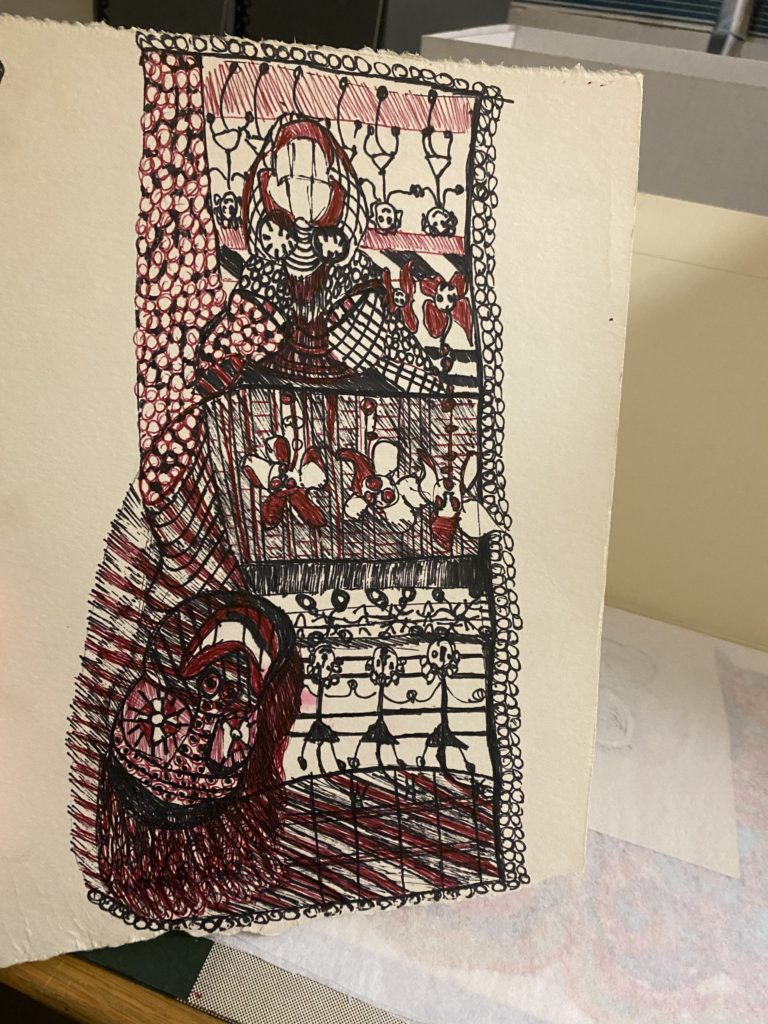After a week filled with presentations and module 1 finals at CGU it was cathartic to be able to sit down with Annette’s collection again. This week all of her photographs were sorted and archived to completion and I began to embark on Annette’s sketchbooks, each seemingly with their own voice. In the photographs I came across photos of Annette’s commissioned textile work displayed in a lobby, using contextual clues from the other photos in the collection it appears to have been taken somewhere between the late 60’s and early 70’s. It wasn’t the natural warm tone of the film that caught my eye, or the soft pixelated grain characteristic of the epoch, it was the sliver of a bare window in the foreground that looked onto a sunny city street. Through this sliver one could make out light stone buildings that looked new despite their art deco features and wide boxy cars dotted the streets in front. Annette had such a keen eye even the faint background of her photos are interesting. At the time of this photo the president could have been Johnson, Nixon or Ford, maybe even my favorite President Carter, and it made me think about how things must have changed and how others had stayed the same.
In her sketchbooks I found a different story, these pieces weren’t necessarily reflective of a time or place like her photographs. Rather, they were timeless. One thing her sketches share with her quilts is the dedication to abstraction, which reinforces the notion that Annette saw things in her own way, on her own terms. Some of her sketches seem to have a Dali-like influence, others seem more inspired by Picasso, others seem akin to Kandinsky. However, what they all have in common is that Annette’s own originality never gets lost in translation.

